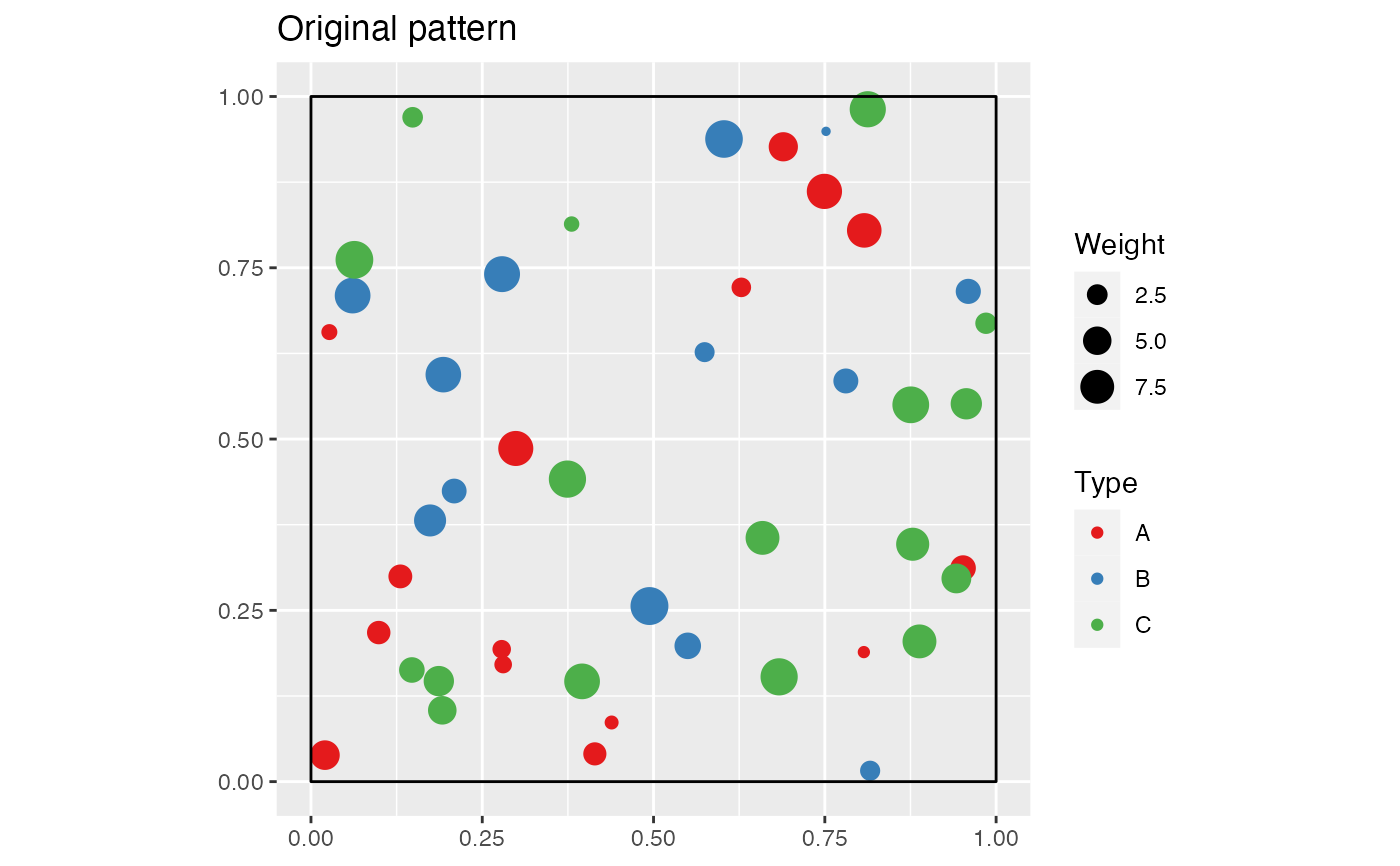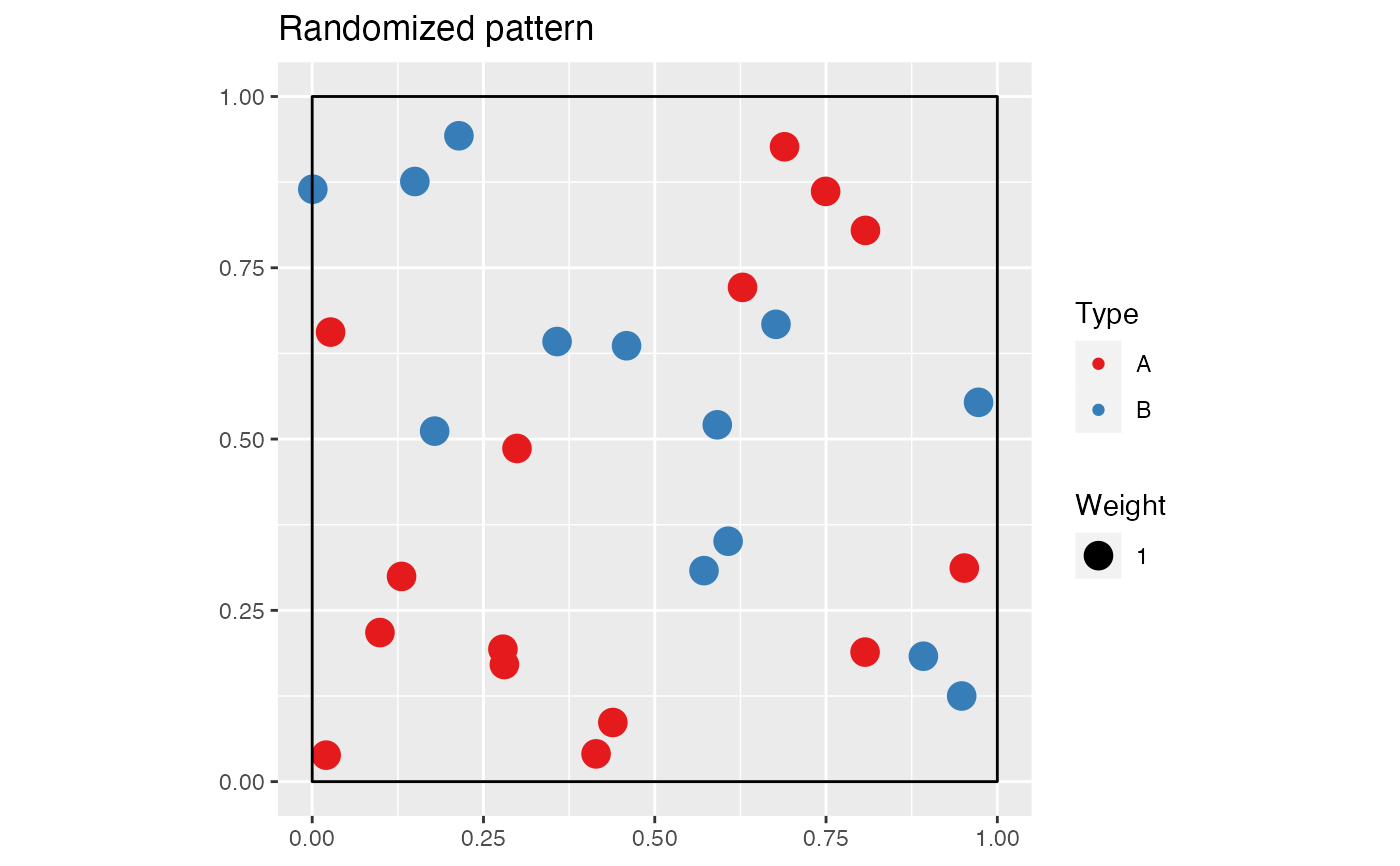
Simulations of a point pattern according to the null hypothesis of population independence defined for K
rPopulationIndependenceK.RdSimulates of a point pattern according to the null hypothesis of population independence defined for K.
Arguments
- X
A weighted, marked, planar point pattern (
wmppp.object).- ReferenceType
One of the point types.
- NeighborType
One of the point types.
- CheckArguments
Logical; if
TRUE, the function arguments are verified. Should be set toFALSEto save time in simulations for example, when the arguments have been checked elsewhere.
Details
Reference points are kept unchanged, neighbor type point positions are shifted by rshift.
Other points are lost and point weights are not kept (they are set to 1) since the K function ignores them.
Value
A new weighted, marked, planar point pattern (an object of class wmppp, see wmppp.object).
References
Goreaud, F. et Pelissier, R. (2003). Avoiding misinterpretation of biotic interactions with the intertype K12 fonction: population independence vs random labelling hypotheses. Journal of Vegetation Science 14(5): 681-692.
Examples
# Simulate a point pattern with three types
X <- rpoispp(50)
PointType <- sample(c("A", "B", "C"), X$n, replace=TRUE)
PointWeight <- runif(X$n, min=1, max=10)
marks(X) <- data.frame(PointType, PointWeight)
X <- as.wmppp(X)
# Plot the point pattern, using PointType as marks
autoplot(X, main="Original pattern")
 # Randomize it
Y <- rPopulationIndependenceK(X, "A", "B")
# Points of type "A" are unchanged, points of type "B" have been moved altogether
# Other points are lost and point weights are set to 1
autoplot(Y, main="Randomized pattern")
# Randomize it
Y <- rPopulationIndependenceK(X, "A", "B")
# Points of type "A" are unchanged, points of type "B" have been moved altogether
# Other points are lost and point weights are set to 1
autoplot(Y, main="Randomized pattern")
